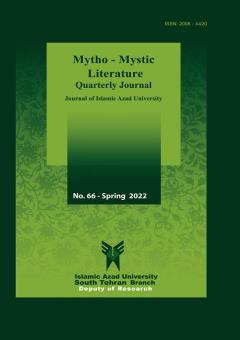-
-
List of Articles
-
Open Access Article
1 - Taboo-Breaking in the Story of Sheikh Sanān; An Analysis Based on Jung's Theory
Mohammad Ahi Elyas Ghaderi -
Open Access Article
2 - Comparative analysis of the points of view of Christian Bobin, and Sohrawardi in Ontologie of Creation
Massumeh Ahmadi Sedigheh Sherkat Moghadam -
Open Access Article
3 - Comparative Analysis of the Hero’s Mythical-Journey Stages with the Mystic’s Mystical-Journey Stages in English Literature
Mahmoud َAfrouz -
Open Access Article
4 - The Ritual of Sacrifice of Animals in the Persian Poetry-Narrative Texts; An Analysis Based on Theories of Sacrifice
ayoob omidi maryam mosharraf -
Open Access Article
5 - The Mystical Passage of Abu Said Abul-Khayr in the Context of the Theory of Rites of Passage
Masoud Hasani Farhād Doroudgariān -
Open Access Article
6 - Geometric Patterns in Zoroastrian Texts and Shāhnāmeh
،Seyedeh Sedigheh Hosseini Dashtikhani Ruhollah Hadi -
Open Access Article
7 - The Concept of "Radical Creation" in Shāhnāmeh and Masnavi Manavi
reza sarikhani Ghadamali Sarami abdolhosein Farzad -
Open Access Article
8 - The Views of Ayn al-Quzat Hamadani and Ruzbehan Baqli about "Quality World" Based on Glasser's Choice Theory
Zohreh Fahami Hasan por alashti Maseod Rohani Mostafā Gorji -
Open Access Article
9 - The Leaders of the Spirits in the Mythologies of Nations; A Comparative Analysis
shahin ghasemi masumeh mirab -
Open Access Article
10 - The Remnants of Myths in The Tales of Mashdi Galin Khānom
khodadad motazed kiani Ghorbanali ebrahimi Mehrdad chatraei Aziz abadi
-
The rights to this website are owned by the Raimag Press Management System.
Copyright © 2021-2025







